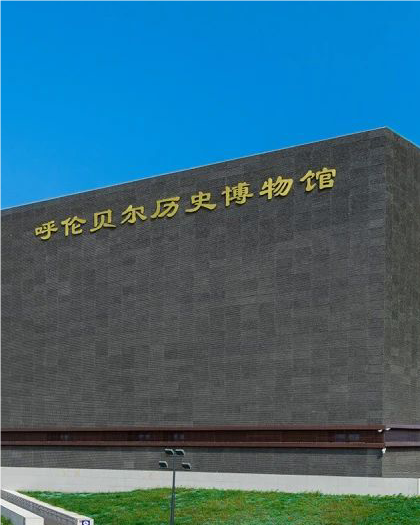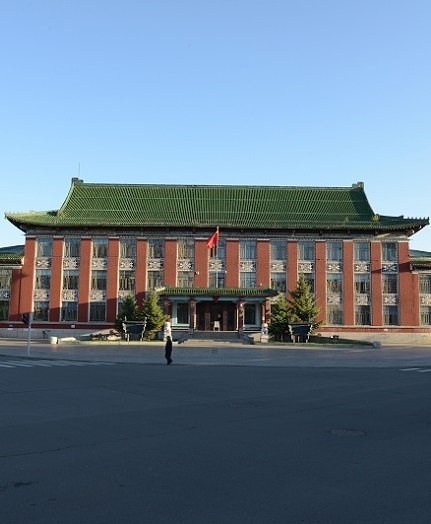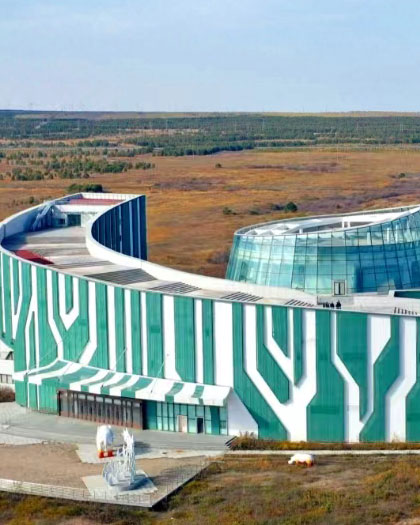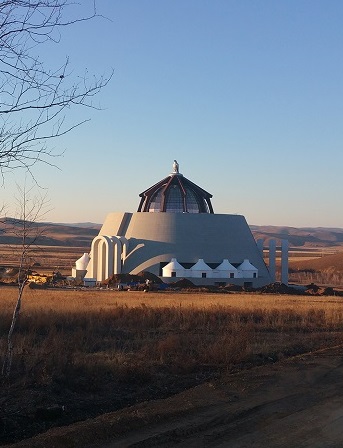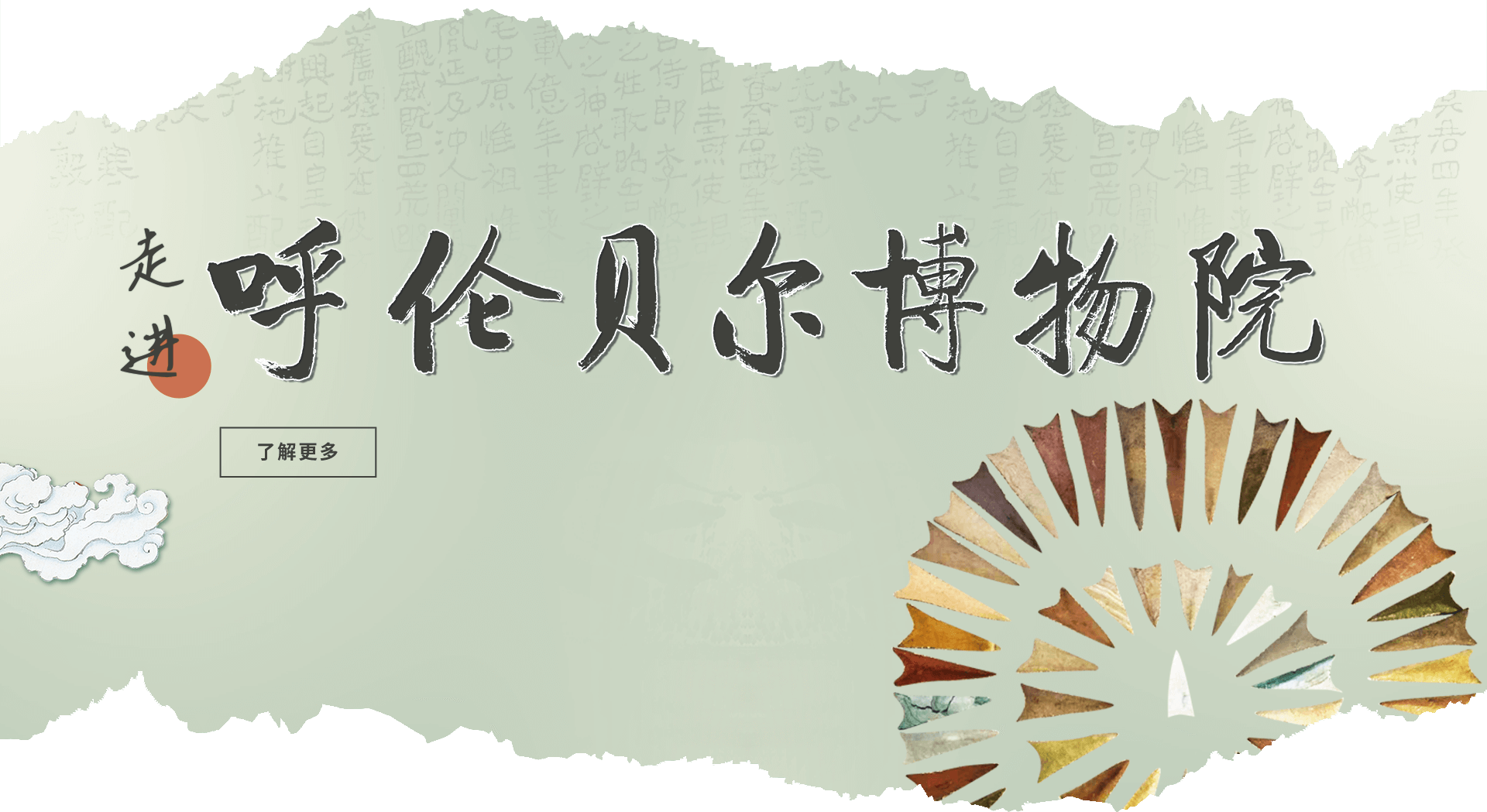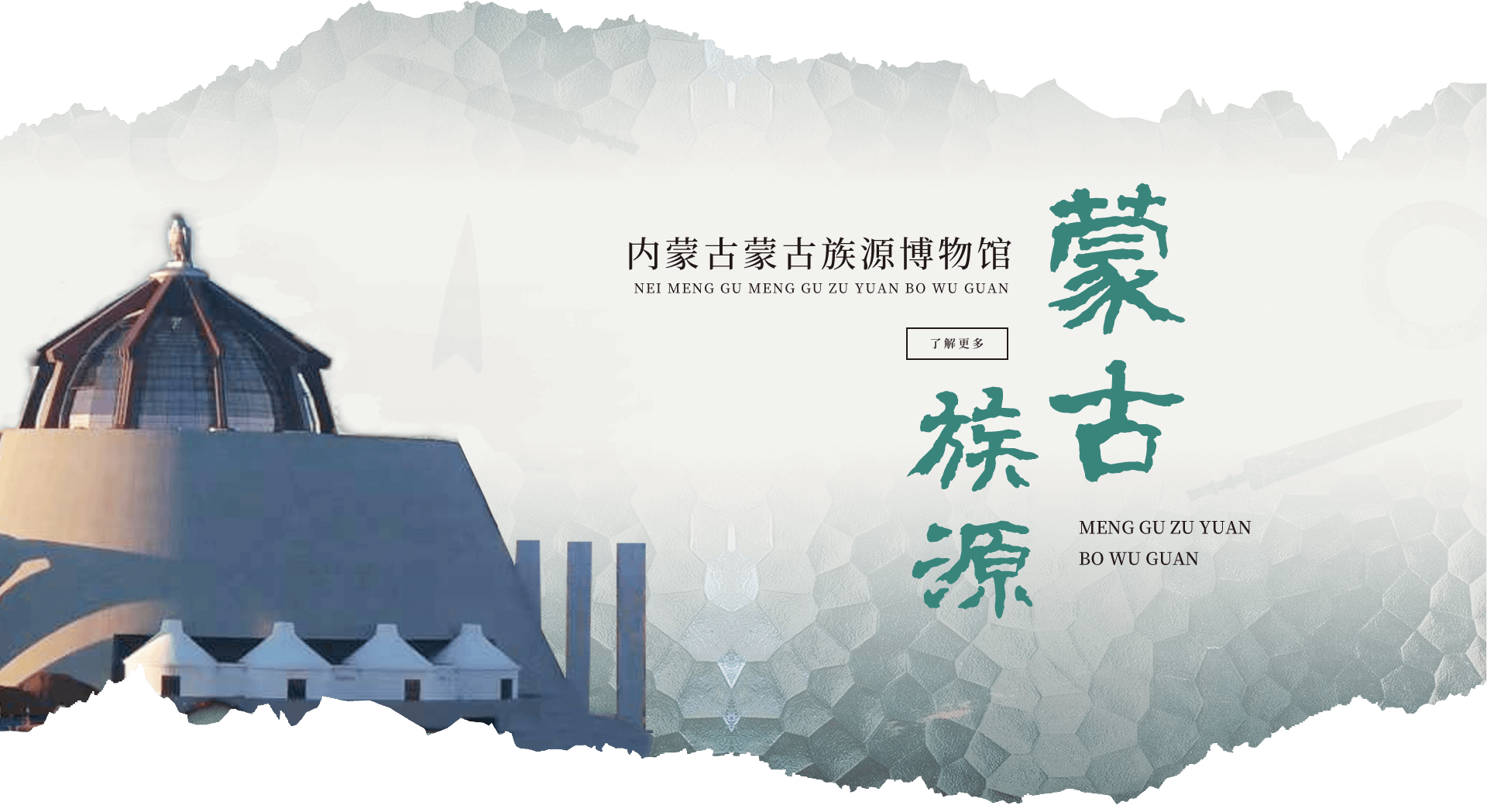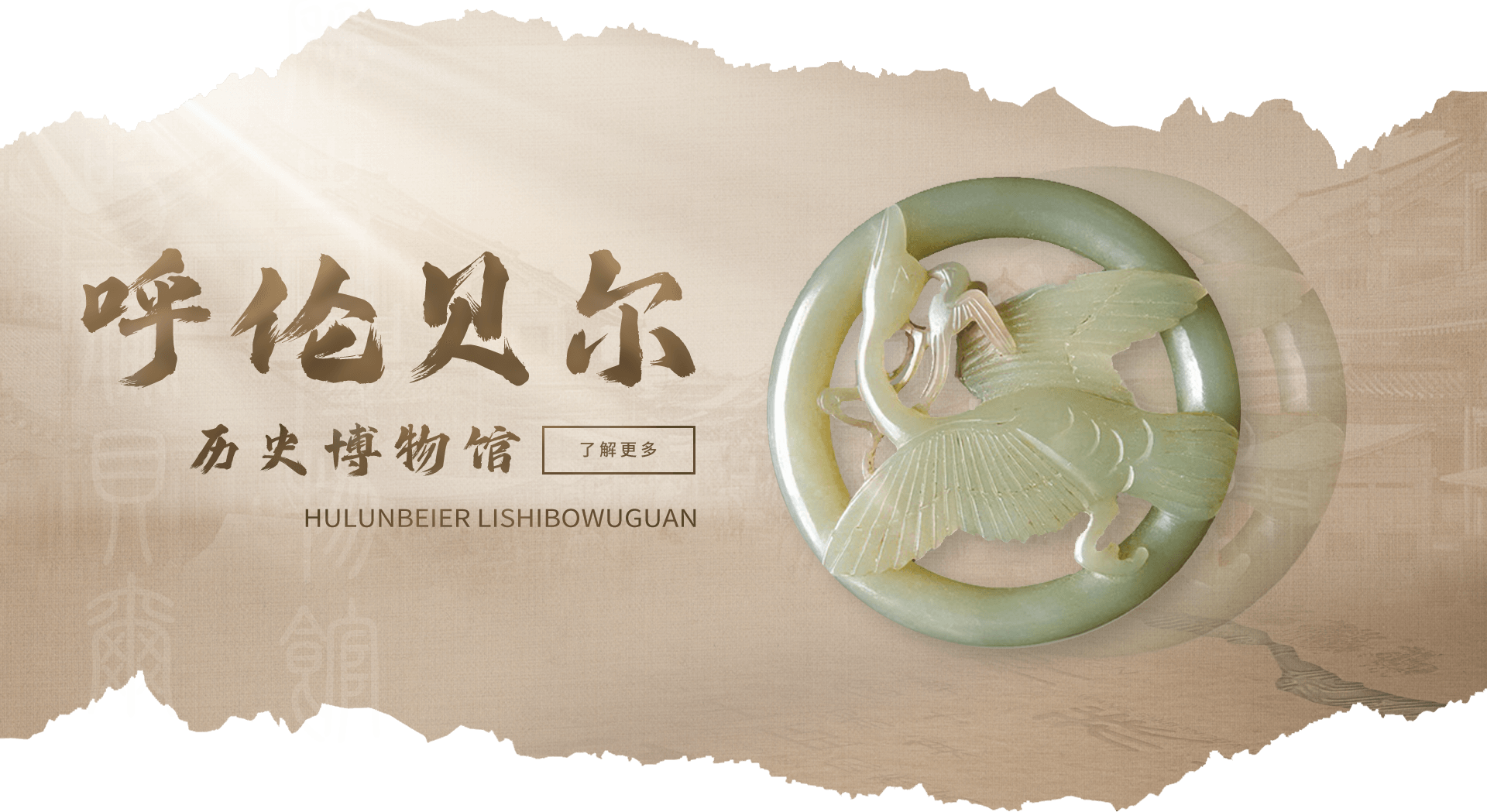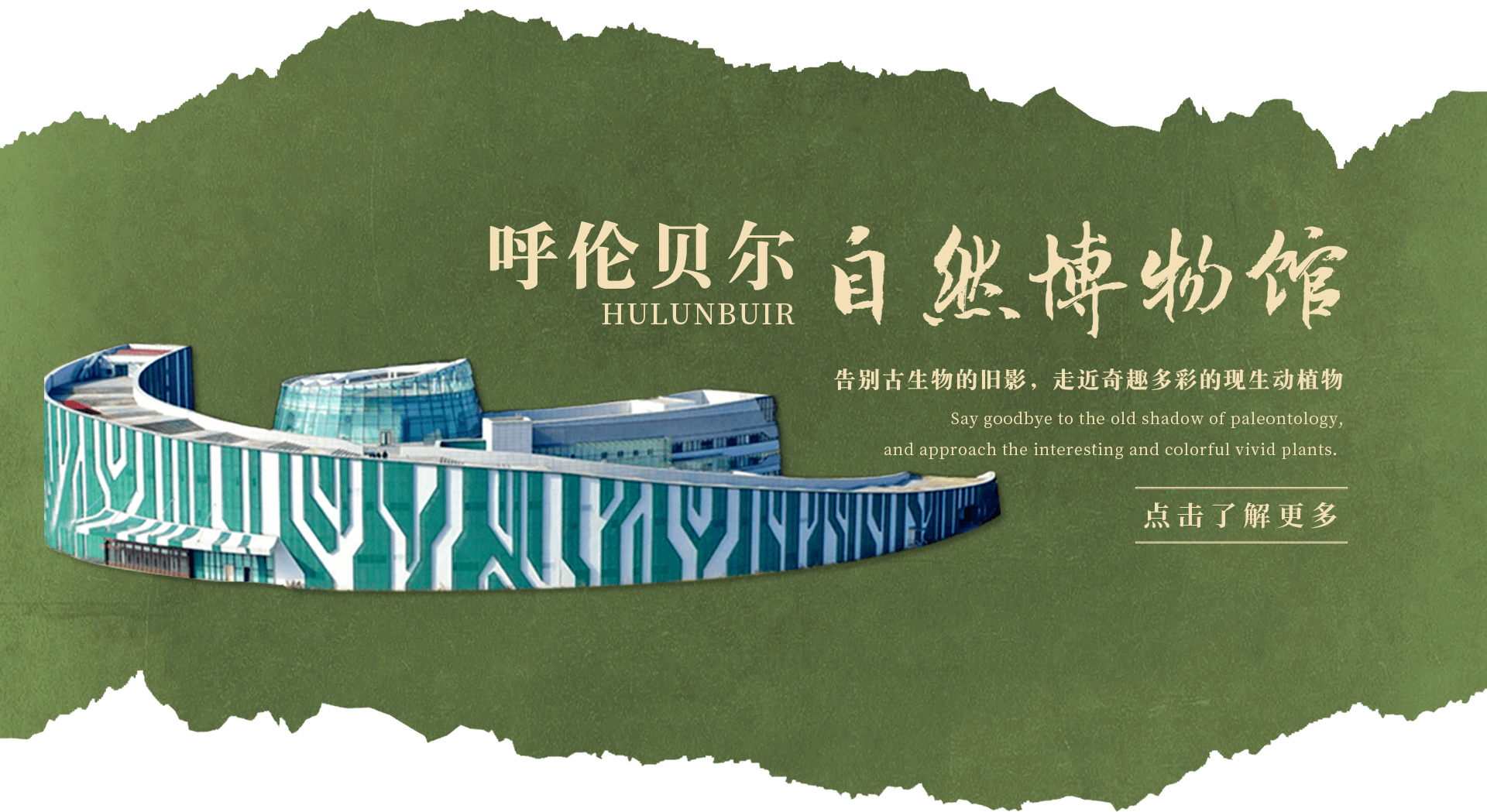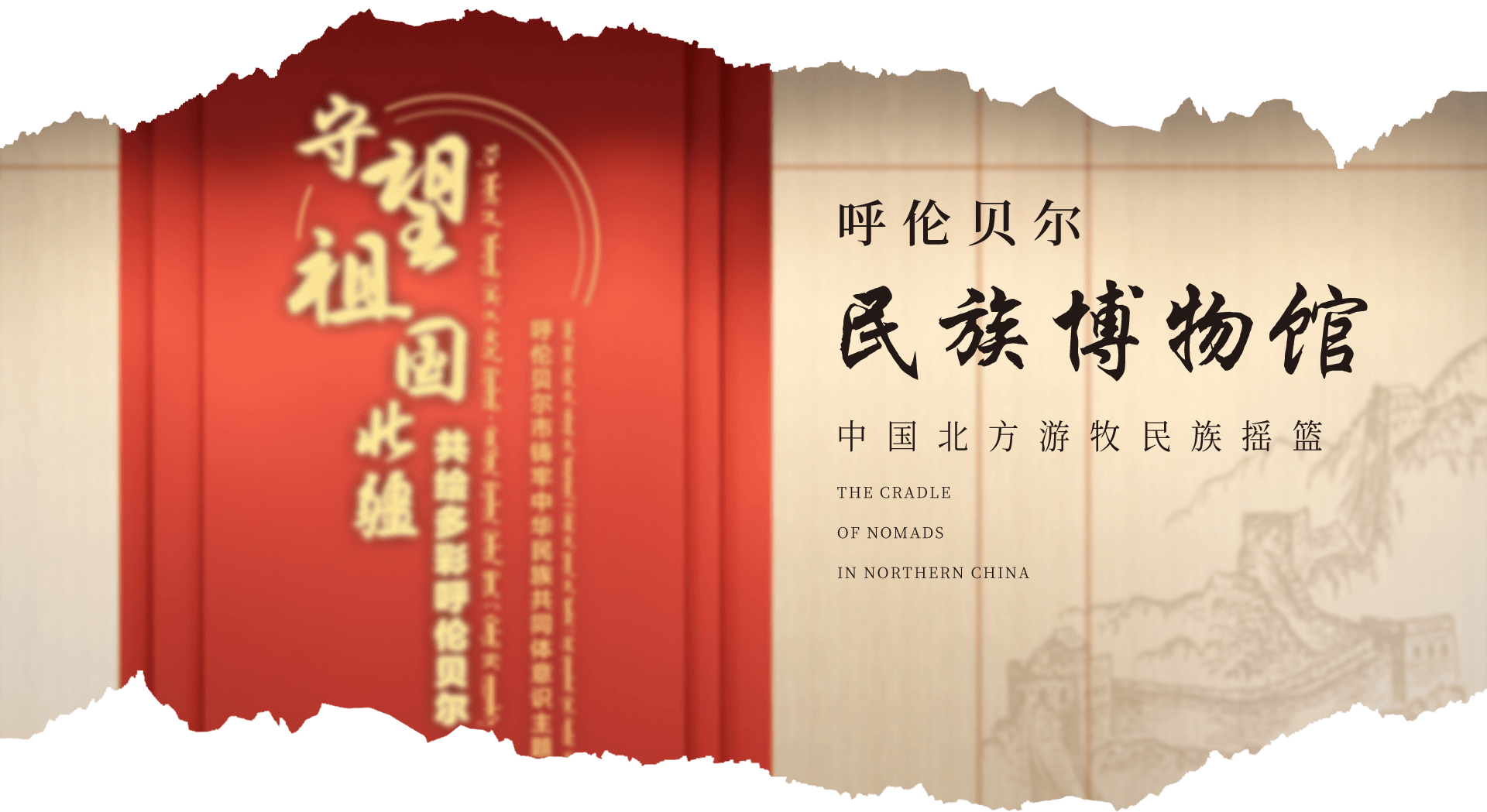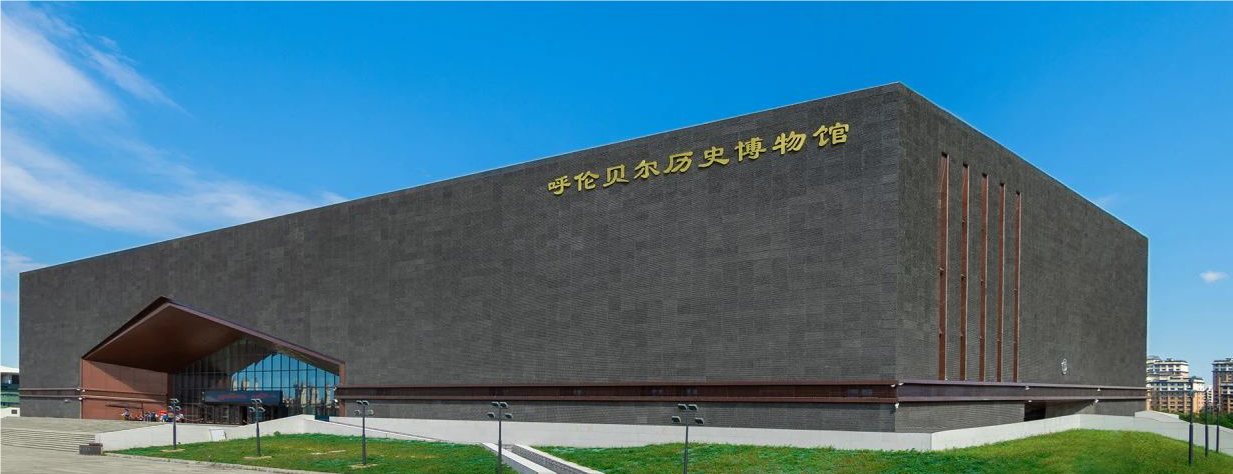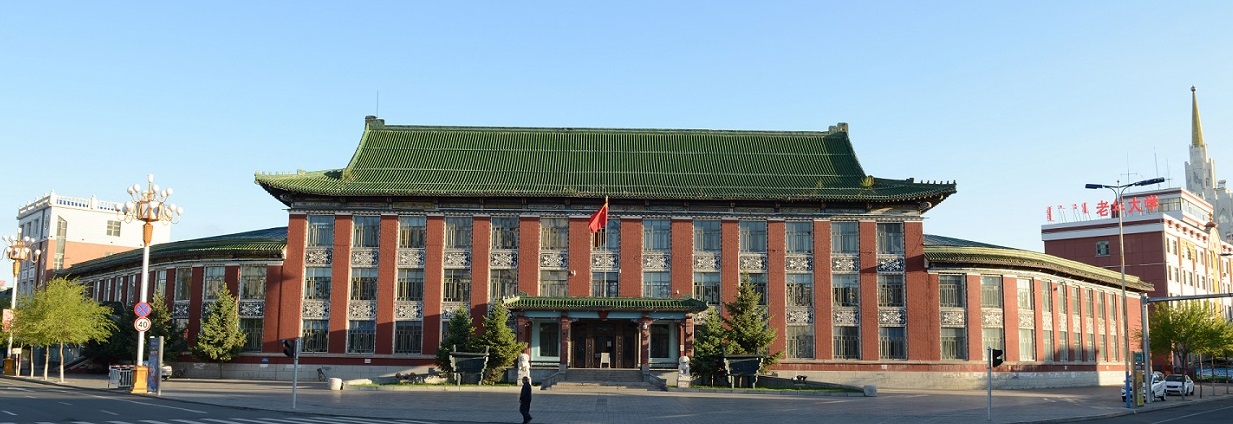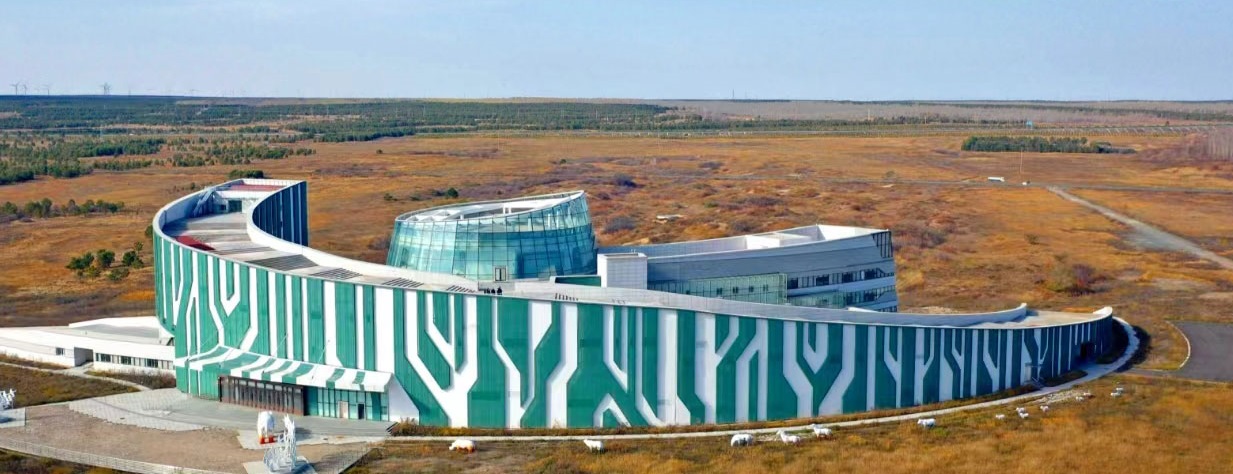
Hulunbuir Museum is a public welfare institution under the governmental jurisdiction of the Hulunbuir Cultural Tourism Radio and Television Bureau (Hulunbuir Cultural Relics Bureau), a national second-grade museum, and a comprehensive museum at the prefecture level that integrates management, research, and conservation as a whole. It is one of the key characteristic museums in Inner Mongolia Autonomous Region. It houses a large collection of over 10000 cultural relics and specimens.
In 2012, Hulunbuir Museum was awarded the title of National Advanced Collective in Cultural Relics Work issued by the State Administration of Cultural Heritage; In 2013, it was announced by the Inner Mongolia Propaganda Department and the Inner Mongolia Social Science Union as the second batch of social science popularization bases in Inner Mongolia Autonomous Region; In 2015, it was jointly awarded the title of Advanced Collective in Cultural Relics Protection Work "2013-2015" for by the Human Resources and Security Department of Inner Mongolia Autonomous Region, the Department of Culture of Inner Mongolia Autonomous Region, the Cultural Relics Bureau of Inner Mongolia Autonomous Region, and the Civil Service Bureau of Inner Mongolia Autonomous Region; In 2016, it was jointly awarded the title of Advanced Collective in the First National Movable Cultural Relics Census by the Human Resources and Security Department, Inner Mongolia Department of Culture, Inner Mongolia Cultural Relics Bureau, and Inner Mongolia Civil Service Bureau of Inner Mongolia Autonomous Region. In 2018, it was awarded the title of the second batch of National Research and Learning Bases for Primary and Secondary School Students announced by the Ministry of Education; and was announced by Inner Mongolia Science and Technology Department as the autonomous-region-level Science and Technology Demonstration Base.

HULUNBUIR
HISTORICAL MUSEUM
INNER MOGOLIA
MOGOLIAN ORIGINAL MUSEUM
TIME:
9:00 — 17:00
[ 16:30 Stop admission [ 17:00 Closed ]
CLOSED ON MONDAYS
[ National holidays include ]
LOCATION:
No.11 Mandula Street, Hailar District, Hulunbuir City,
Inner Mongolia Autonomous Region, China.
BUS ROUTE:
Take bus 4 or 104 to the Xuefu Road Middle School Station,
then walk northwest for about 100 meters.
CLICK TO VIEW VENUES
Please note:
The museum has dedicated parking lots, please park according to the instructions.
TIME:
9:00 — 17:00
[ 16:30 Stop admission [ 17:00 Closed ]
CLOSED ON MONDAYS
[ National holidays include ]
LOCATION:
No.24 Alihe Road, Hailar District, Hulunbuir City,
Inner Mongolia Autonomous Region, China
BUS ROUTE:
Take buses 1, 2, and 102 to the Hulunbuir Museum of
Ethnology Station and walk for 20 meters.
CLICK TO VIEW VENUES
Please note:
The museum has dedicated parking lots, please park according to the instructions.
TIME:
9:00 — 17:00
[ 16:30 Stop admission [ 17:00 Closed ]
CLOSED ON MONDAYS
[ National holidays include ]
LOCATION:
BUS ROUTE:
CLICK TO VIEW VENUES
TIME:
9:00 — 17:00
[ 16:30 Stop admission [ 17:00 Closed ]
CLOSED ON MONDAYS
[ National holidays include ]
LOCATION:
BUS ROUTE:
CLICK TO VIEW VENUES

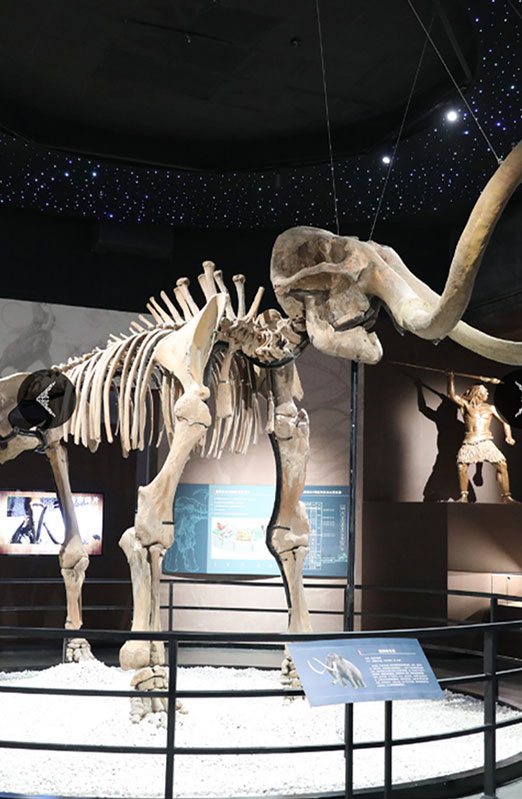
STAR-STUDDED NORTH
HULUNBUIR IN THE PREHISTORIC PERIOD
About 10,000 years ago, Hulunbuir entered the Neolithic Age. The ancestors began to use Neolithic tools for hunting, fishing, gathering and other activities. The Neolithic Age of Hulunbuir was famous for its exquisite craftsmanship of microlithic tools which were praised by historians as "looking like moulded products, but actually hand-made, reaching the pinnacle of microlithic processing technology". The exquisitely carved stone tools, polished jade, beautiful and practical pottery, and simple rock paintings drawn on the forest rocks in the Greater Hinggan Mountains recorded the life marks of ancient humans in Hulunbuir and the splendid culture they created. Walking on the land of Hulunbuir and sightseeing hundreds of historical relics of the Stone Age, it is as if you are having a dialogue with ancient humans across time and space. The prehistoric culture of Hulunbuir is in the northernmost part of the motherland, adding a shining star to the starry sky of the origins of Chinese civilization.
EXHIBITION VENUE: Hulunbuir Historical Museum
EXHIBITION TIME: Permanent exhibition
PERMANENT EXHIBITION HALL
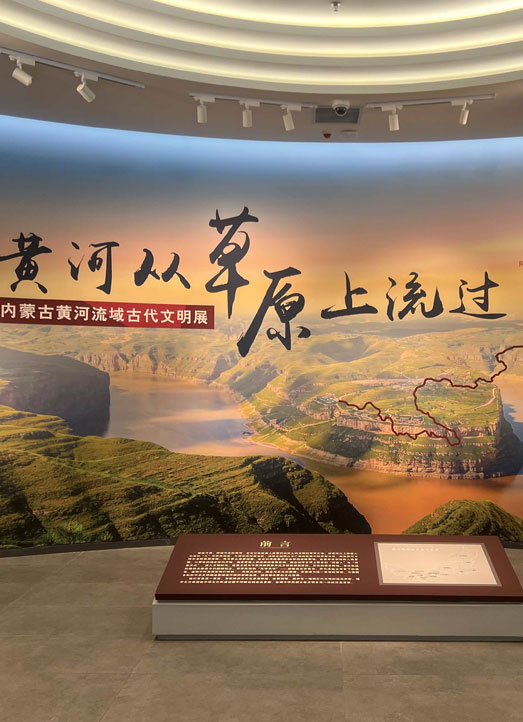
YELLOW RIVER FLOWING
THROUTH THE GRASSLANDS
The Yellow River, stretching for thousands of miles and flowing endlessly, has been a fertile "cradle” for mankind and the breeding place of civilization since ancient times. In the zigzag surrounding watershed area, where the Yellow River enters the middle reaches from the upstream, it is the Hetao area of the Yellow River. Crossing the Yin Mountain, the Yellow River basin neighbors the vast Eurasian grassland in the north; crossing the Yellow River, it borders on the Ordos Plateau in the south; and it faces the Loess Plateau in the east. The Yellow River basin is the strategic place that the military must fight for, and is also the human home of agriculture and grazing from of old. Since the ancient times of ignorance, it is an important area of human activities, which is the birthplace of the famous "Hetao people" and "Hetao culture" in archaeology. In the era of civilization, it has become the frontier of association, communication and exchange between the farming peoples of the Central Plains and the nomadic herders of the north.
EXHIBITION VENUE: Hulunbuir Historical Museum
EXHIBITION TIME: Permanent exhibition
PERMANENT EXHIBITION HALL
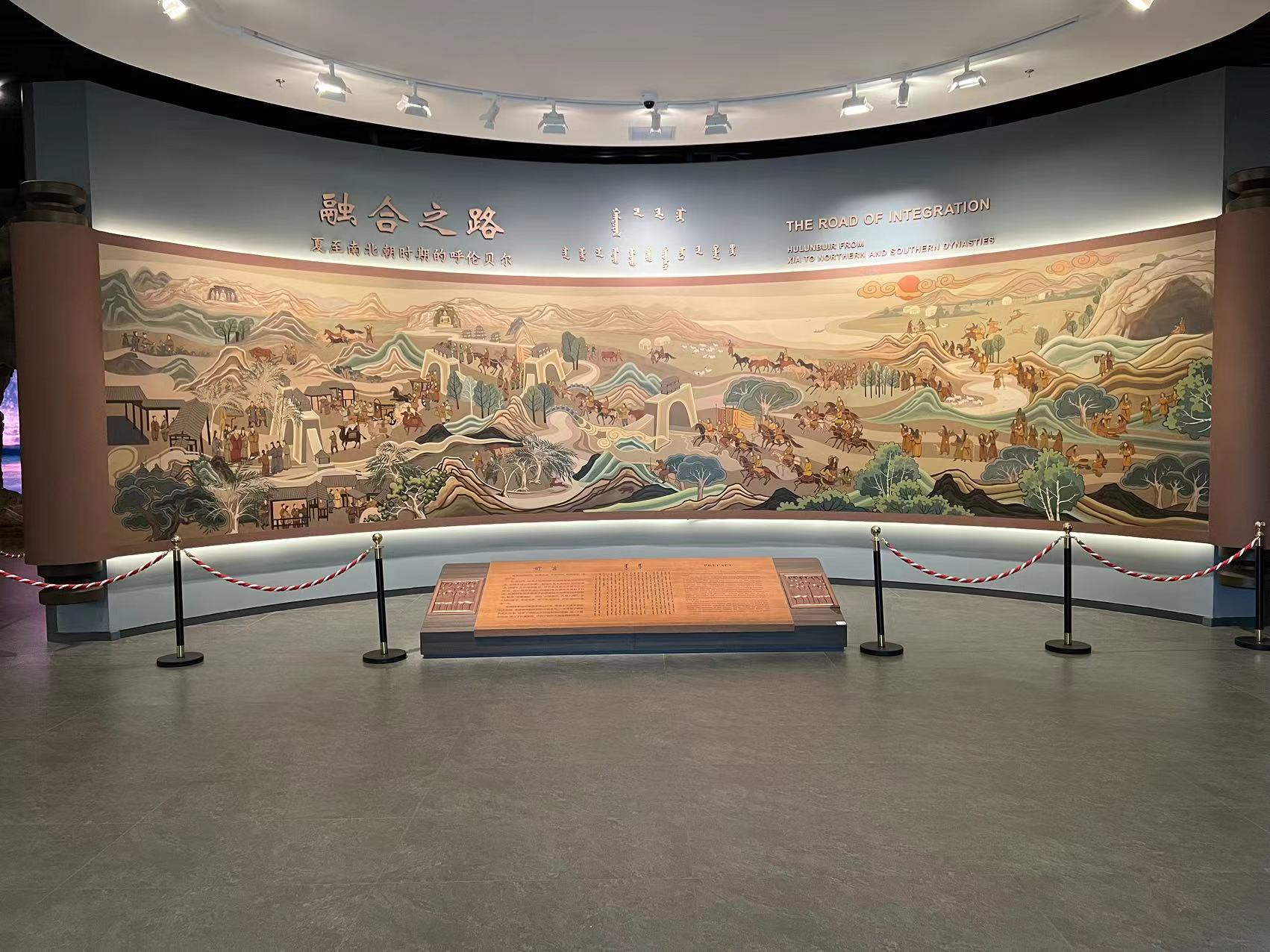
THE ROAD OF INTEGRATION
HULUNBUIR FROM XIA TO NORTHERN
AND SOUTHERN DYNASTIES
From Xia Dynasty to Warring States Period, fightings and wars broke out on the grasslands. Donghu scattered and retreated into the forest.In the Han Dynasty, Tuoba Xianbei, whose ancestral home was in the Great Hinggan Mountains, walked out of the forest and moved to Daze (Hulun Lake), grazing their animals on the lush Hulunbuir grassland. With the changes in the ecological environment, their economic life transformed from hunting to nomadism, which was confirmed by the archaeological remains of this period. Tuoba Xianbei thus completed the transformation from a hunting economy to a nomadic economy, and then "sought further southward migration". They “went through the high mountains and deep valleys, overcame many difficulties and obstacles", walked into the foot of the Yinshan Mountains and moved toward the Central Plains, unifying the Yellow River basin, linking up the inside and outside areas of the Great Wall.
EXHIBITION VENUE: Hulunbuir Historical Museum
EXHIBITION TIME: Permanent exhibition
PERMANENT EXHIBITION HALL






